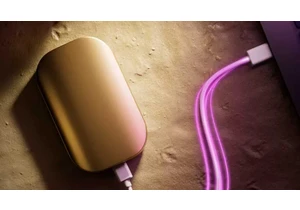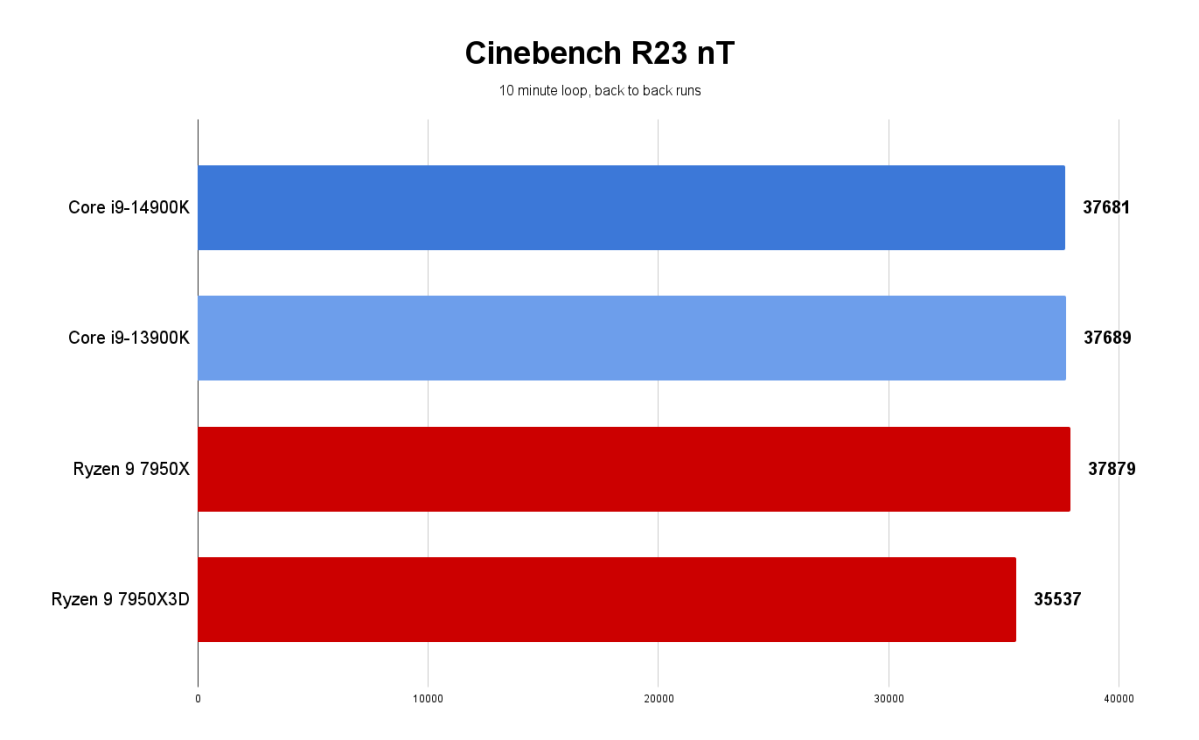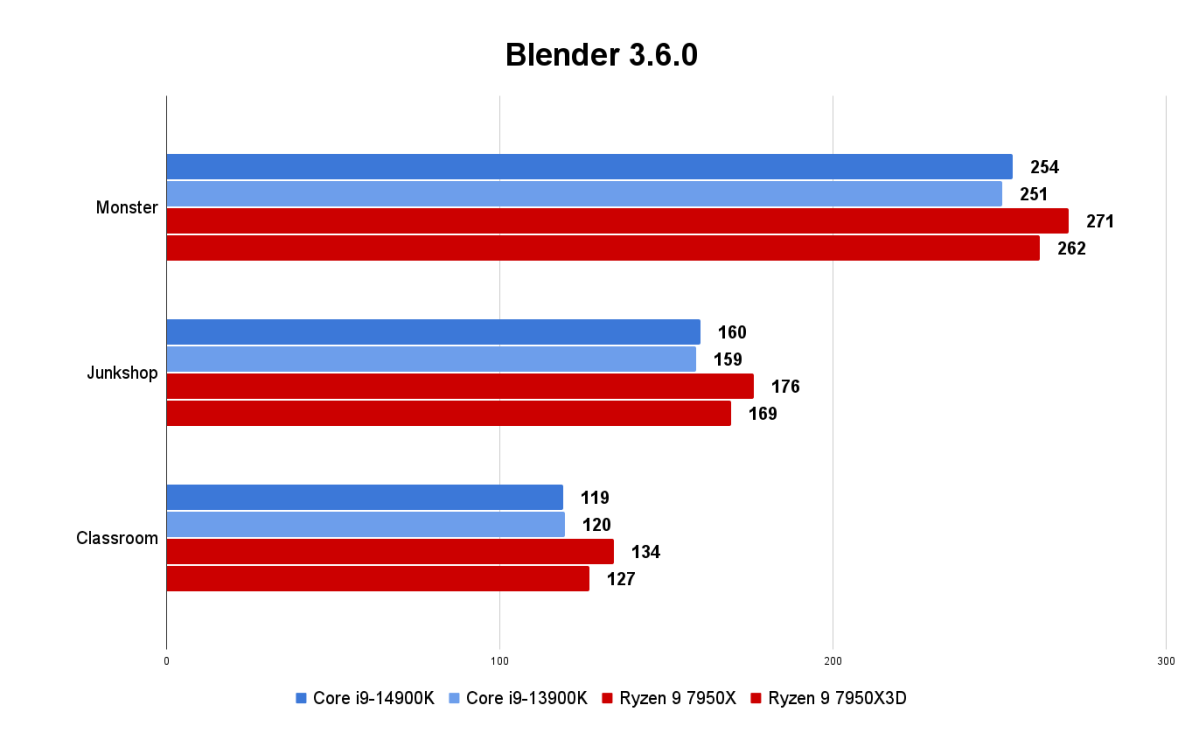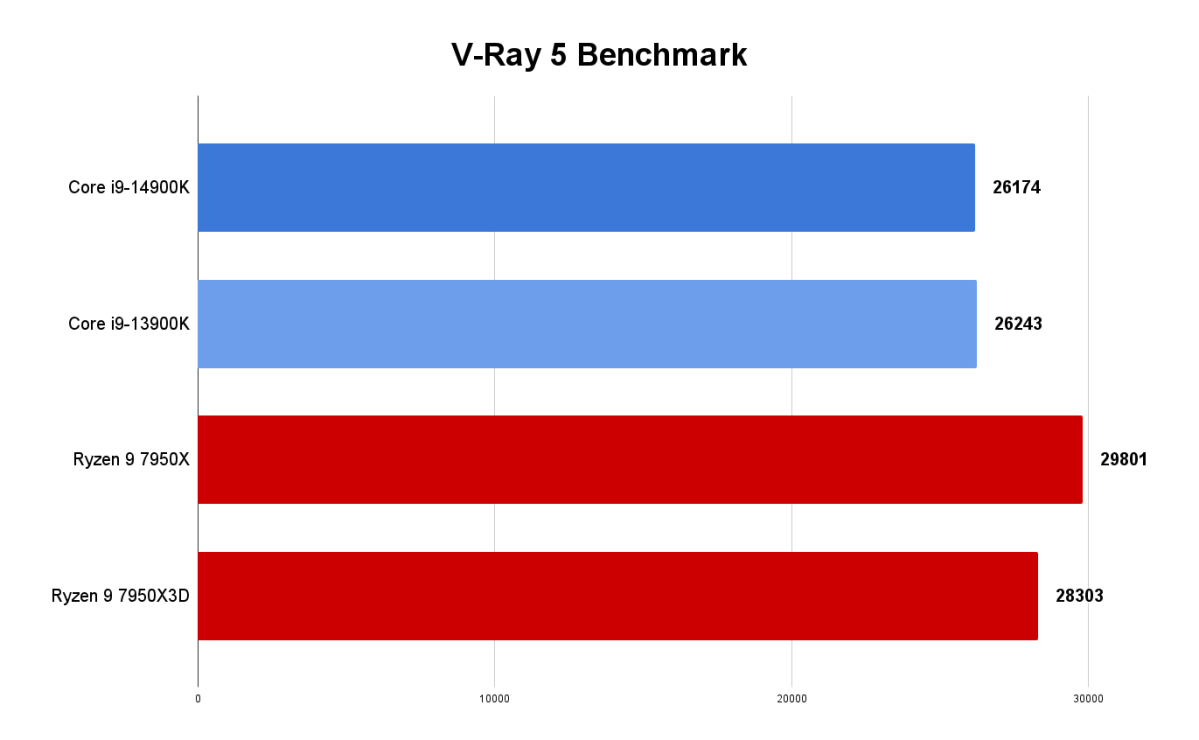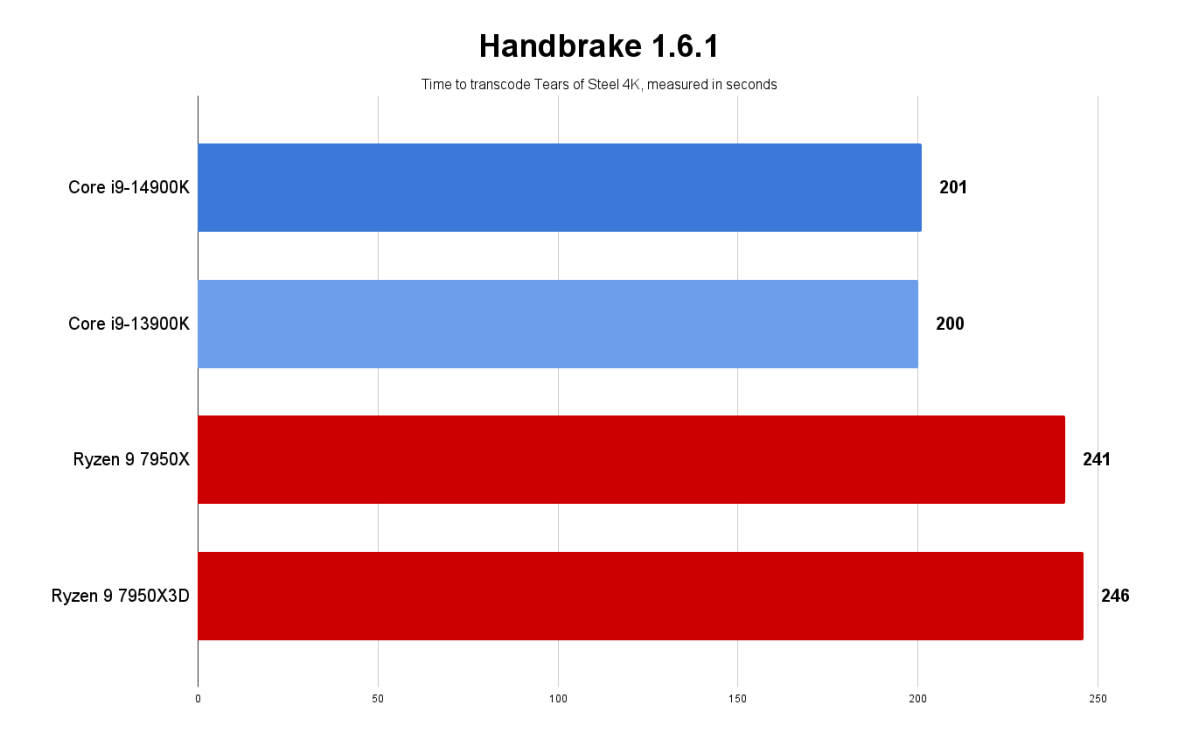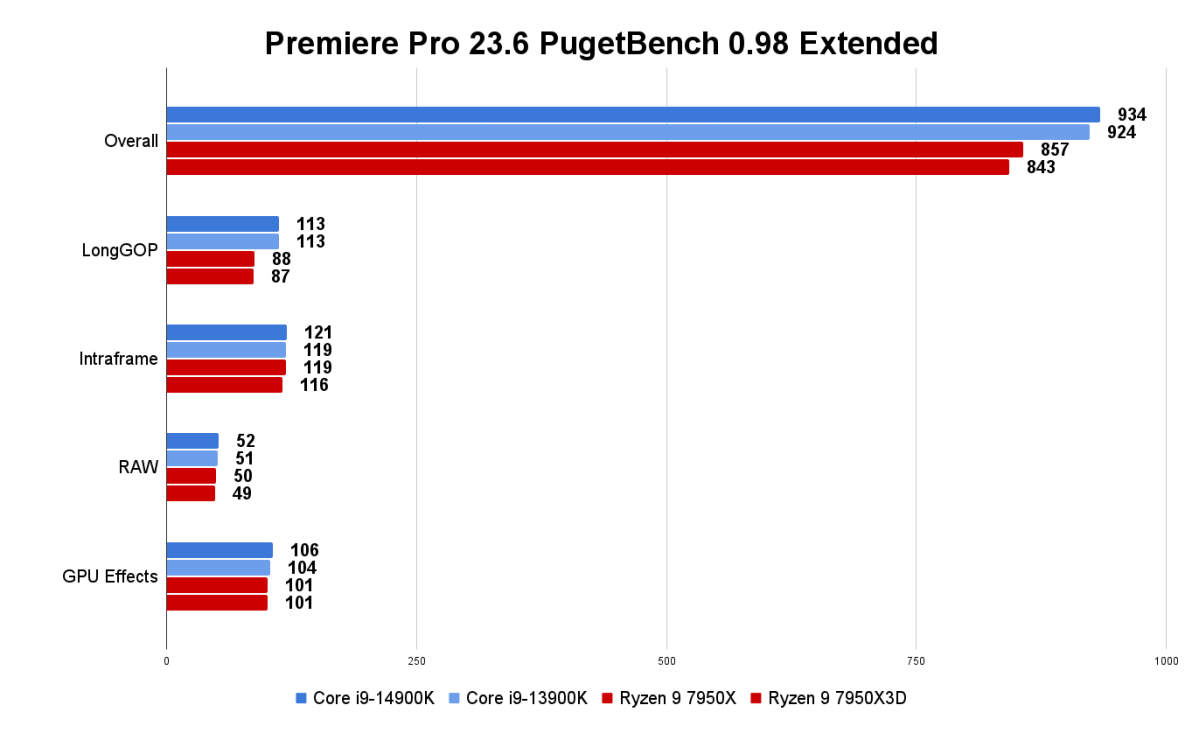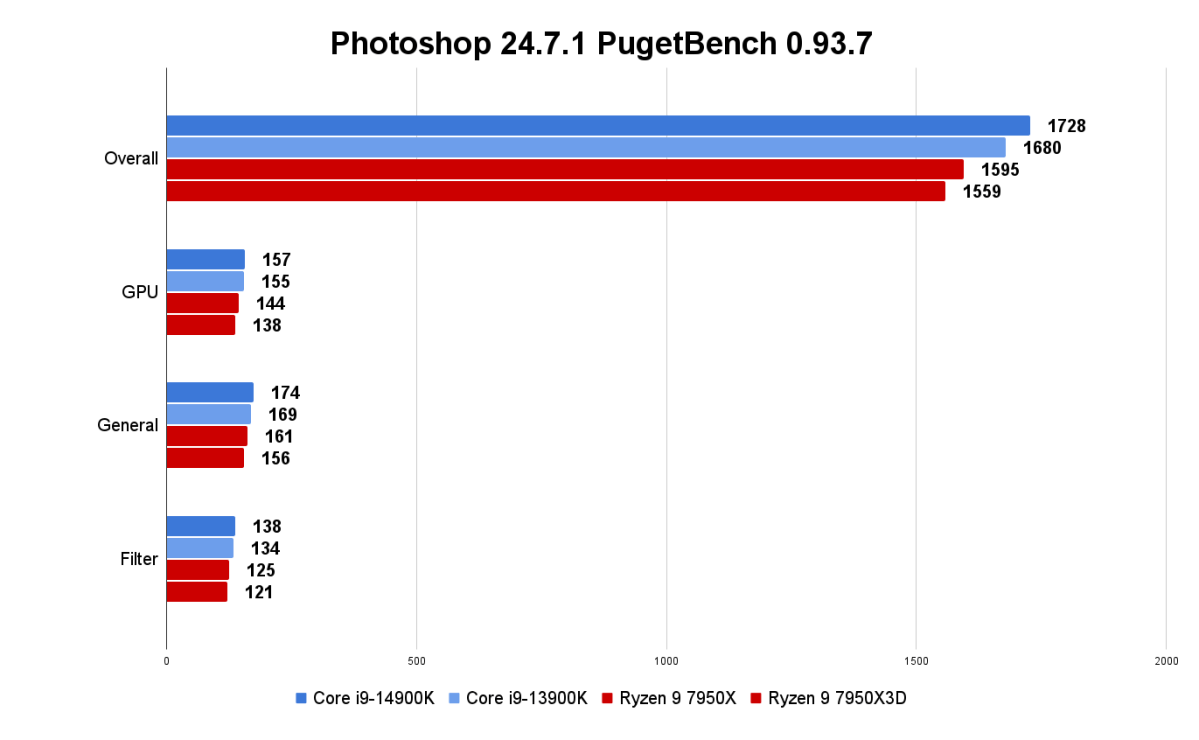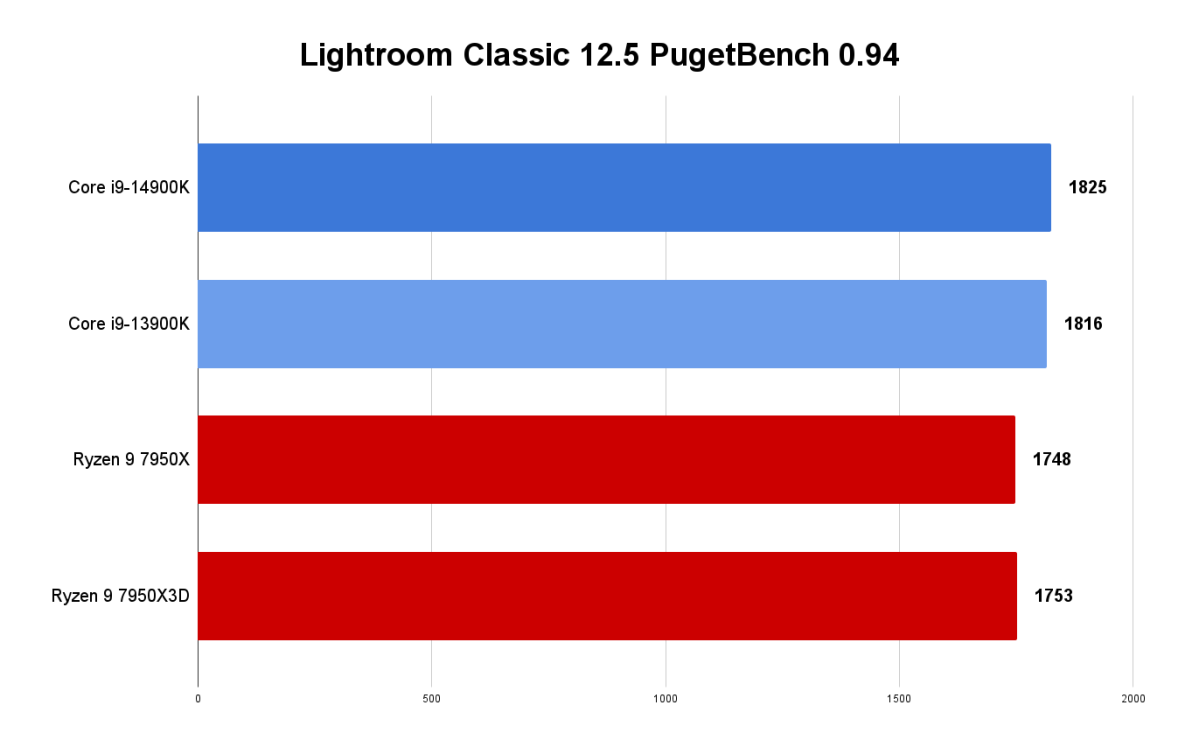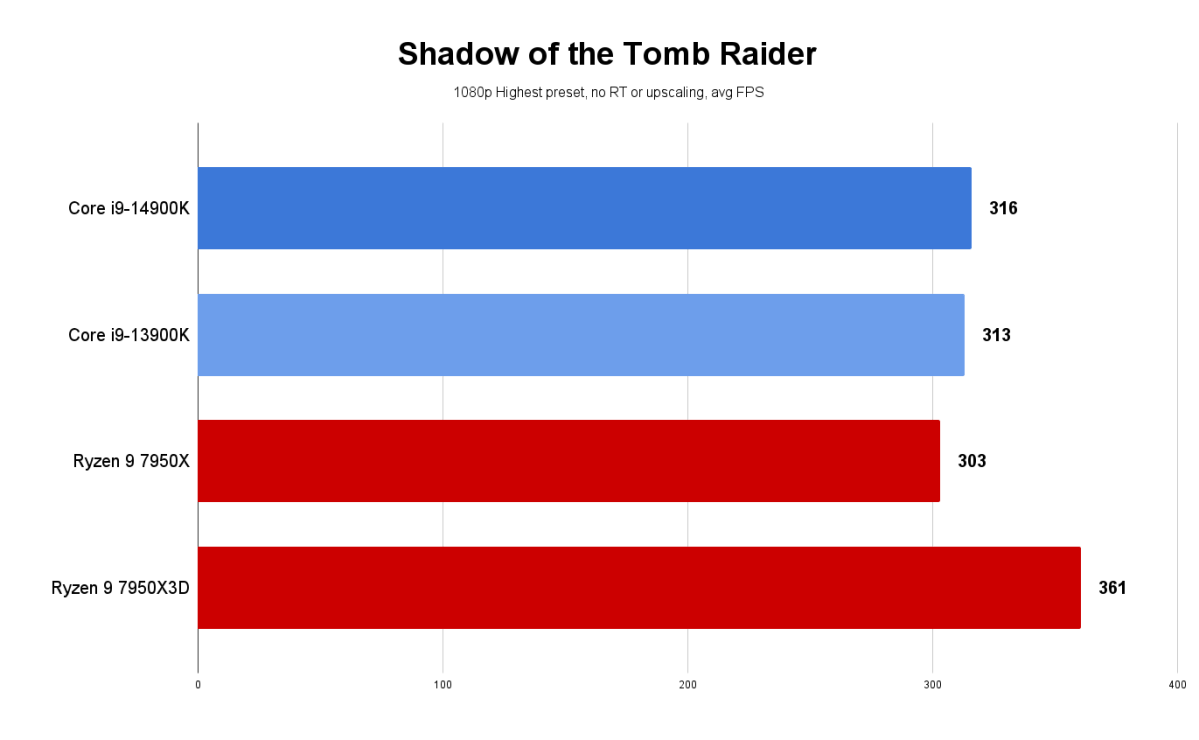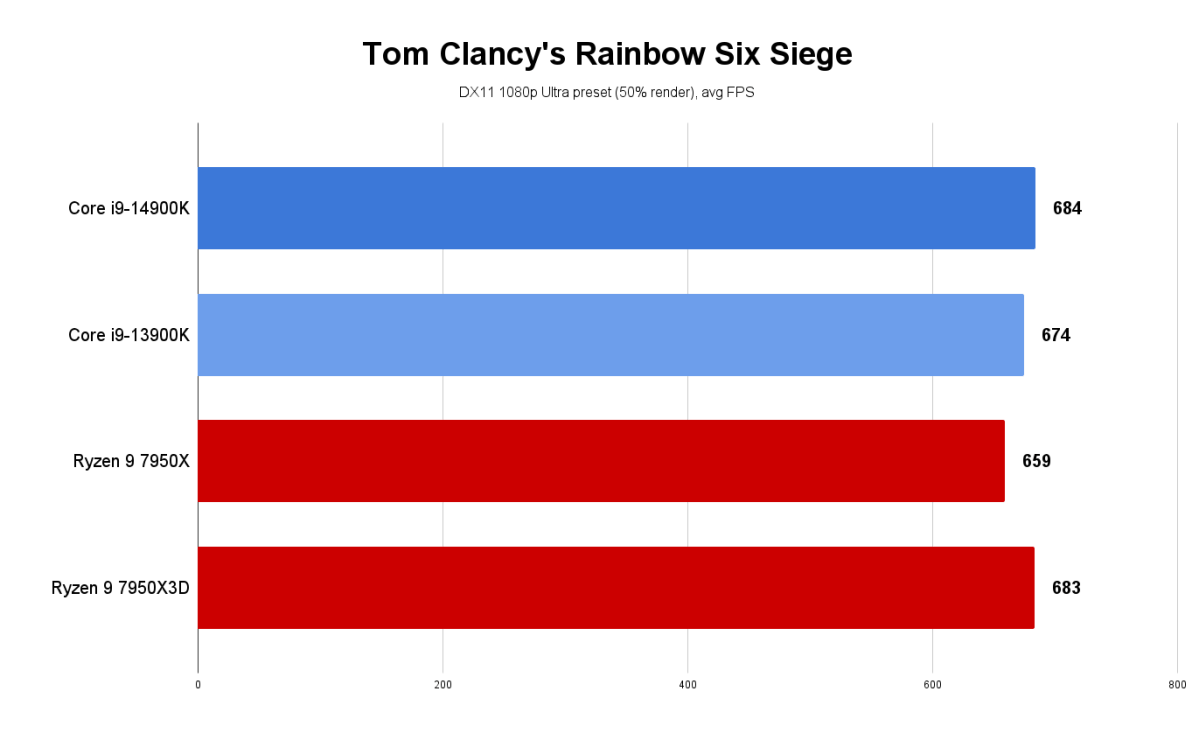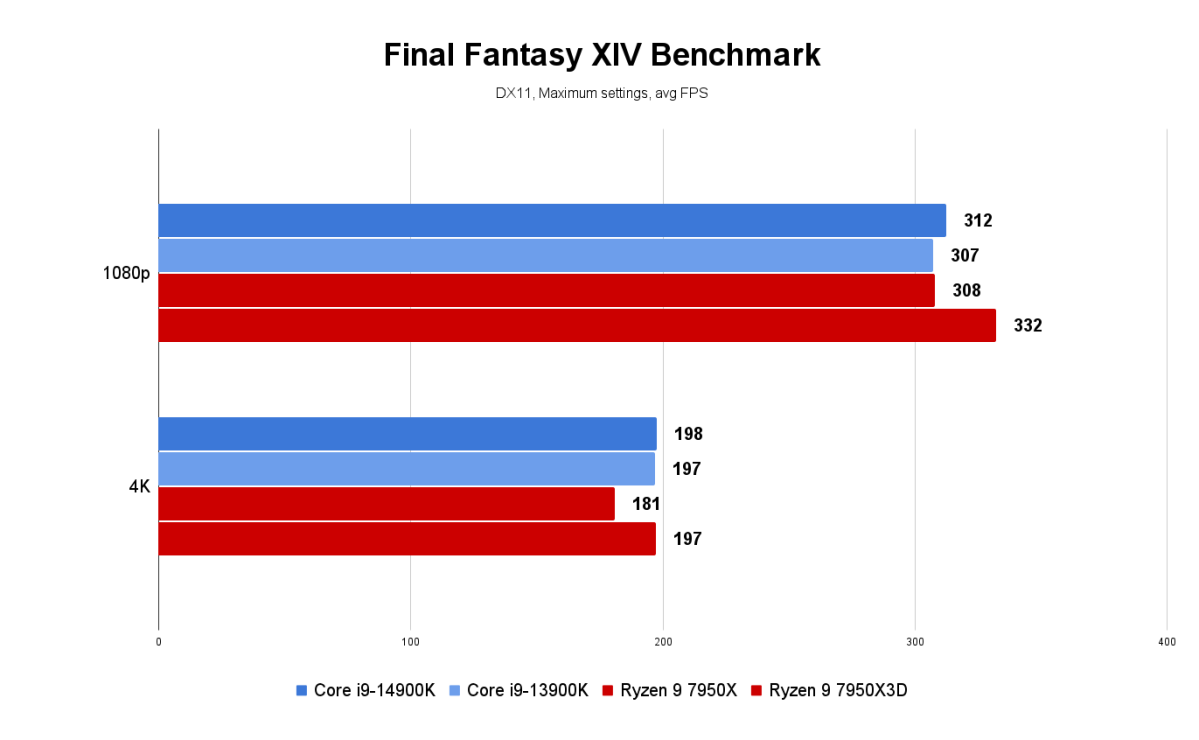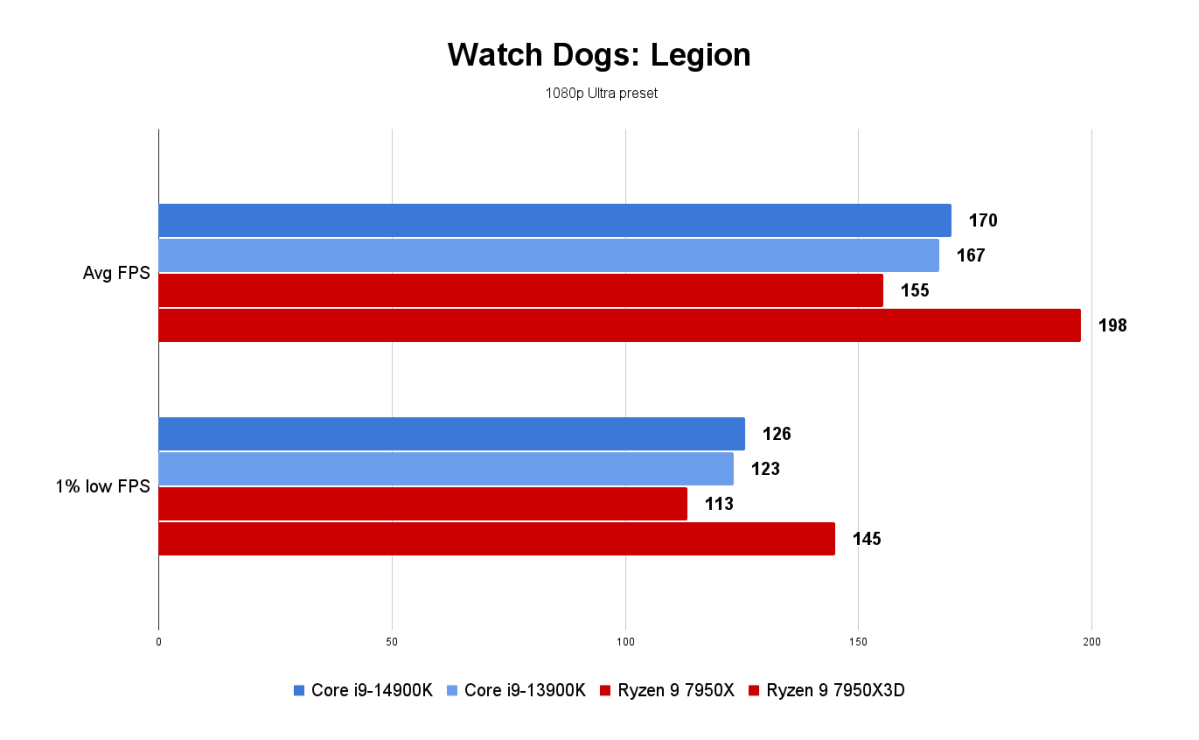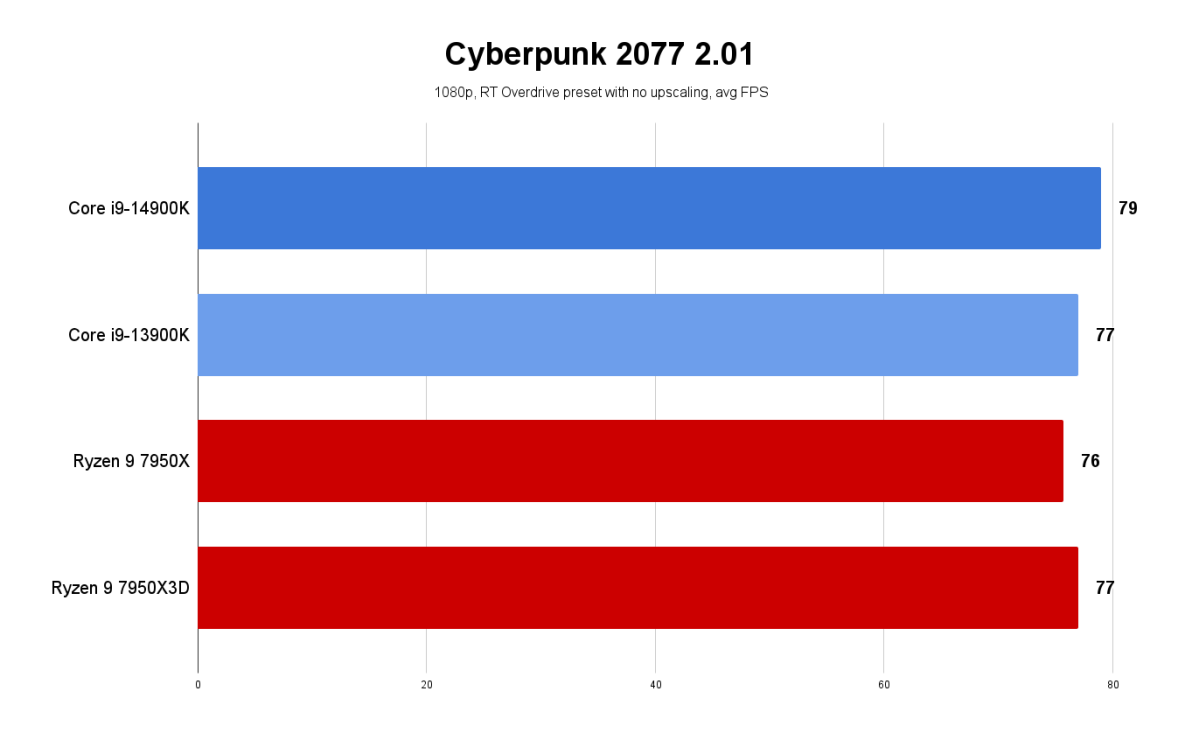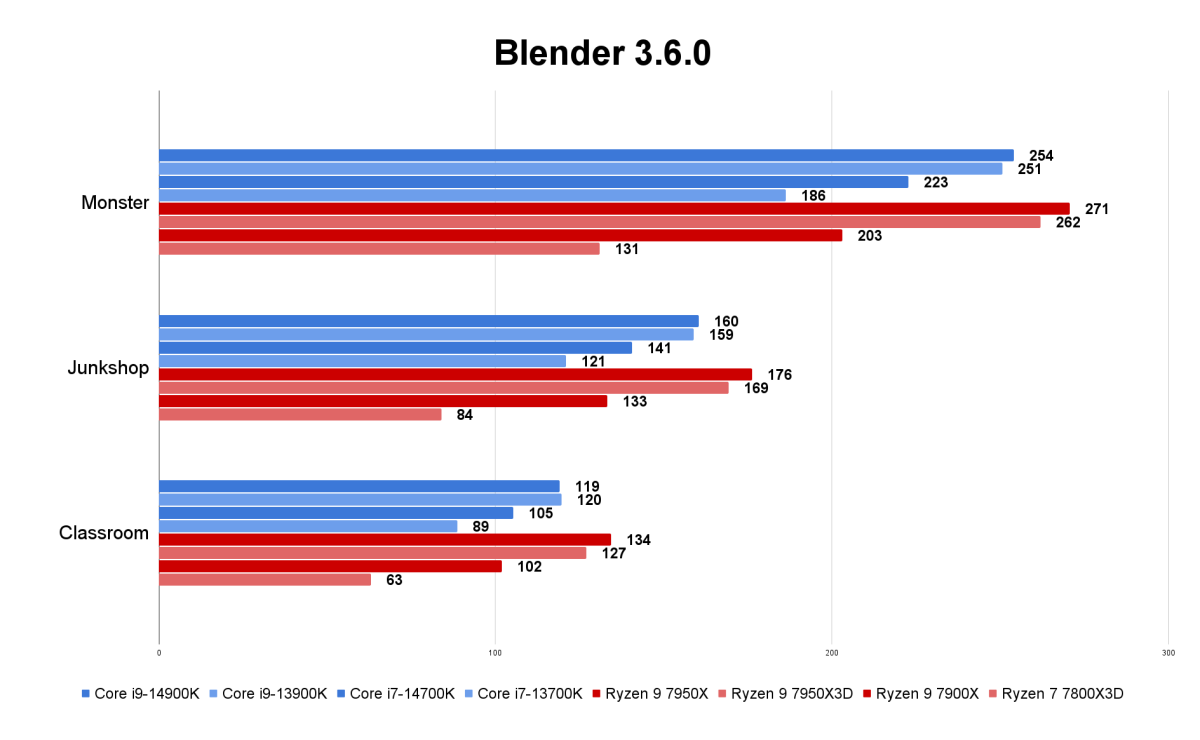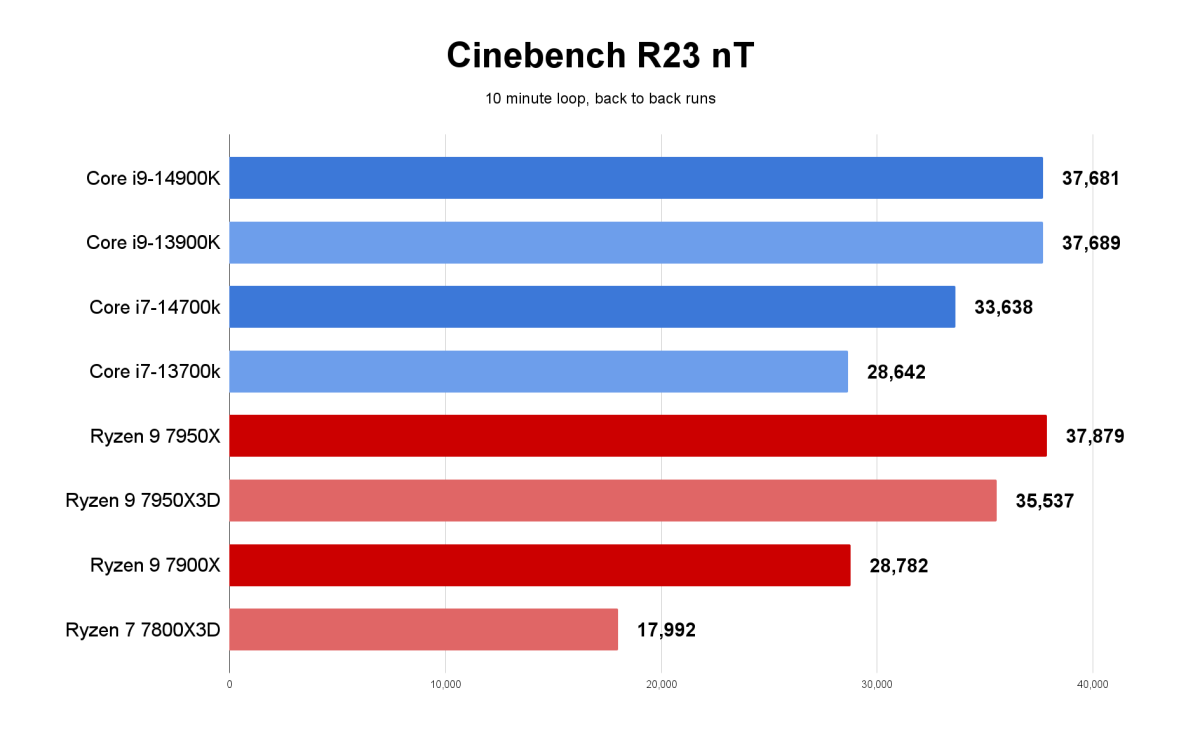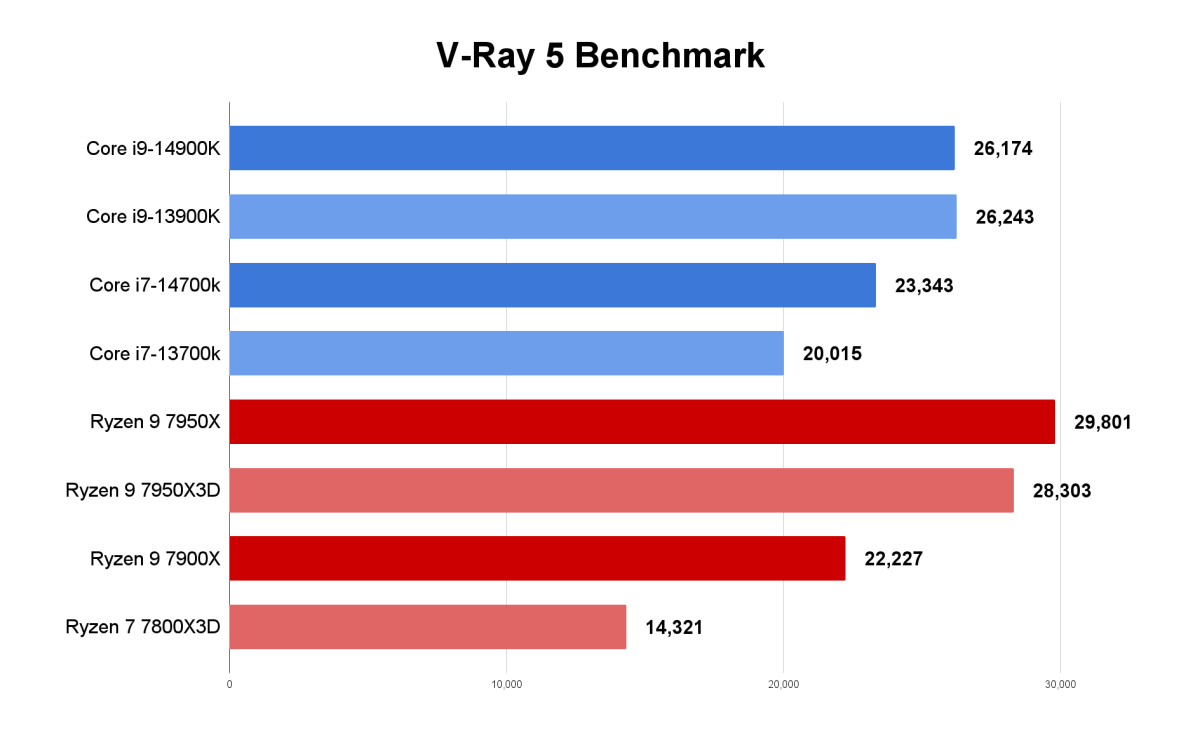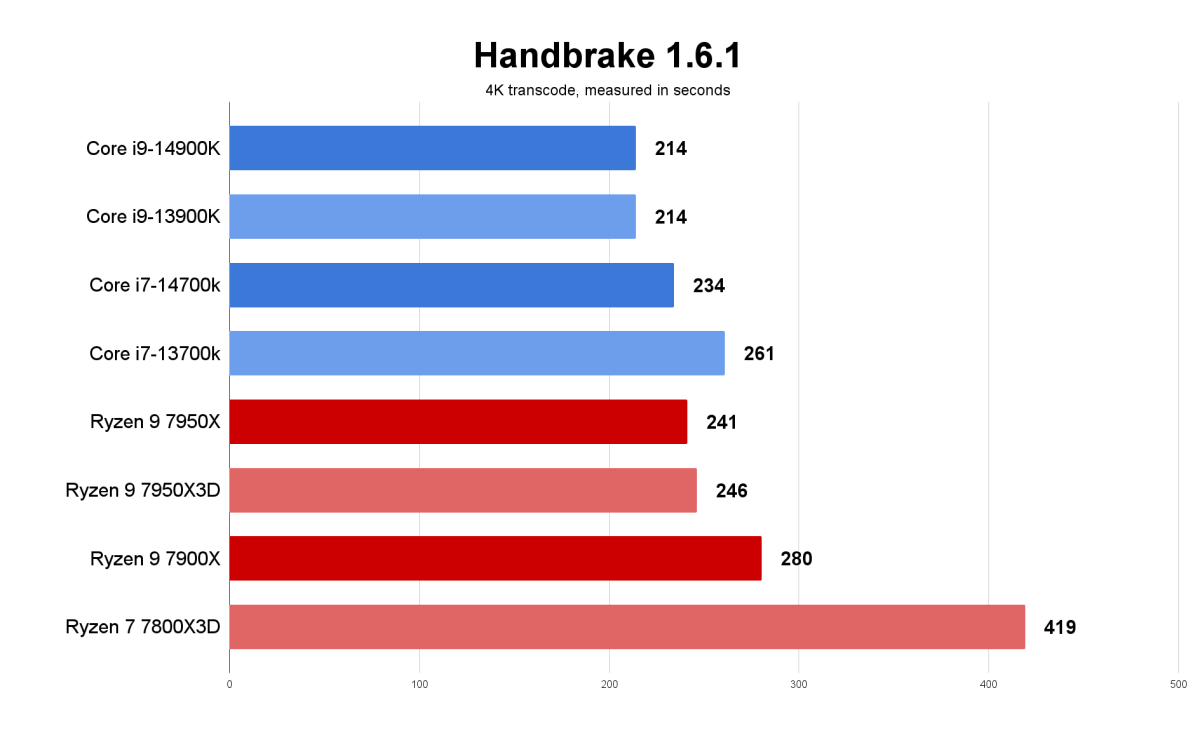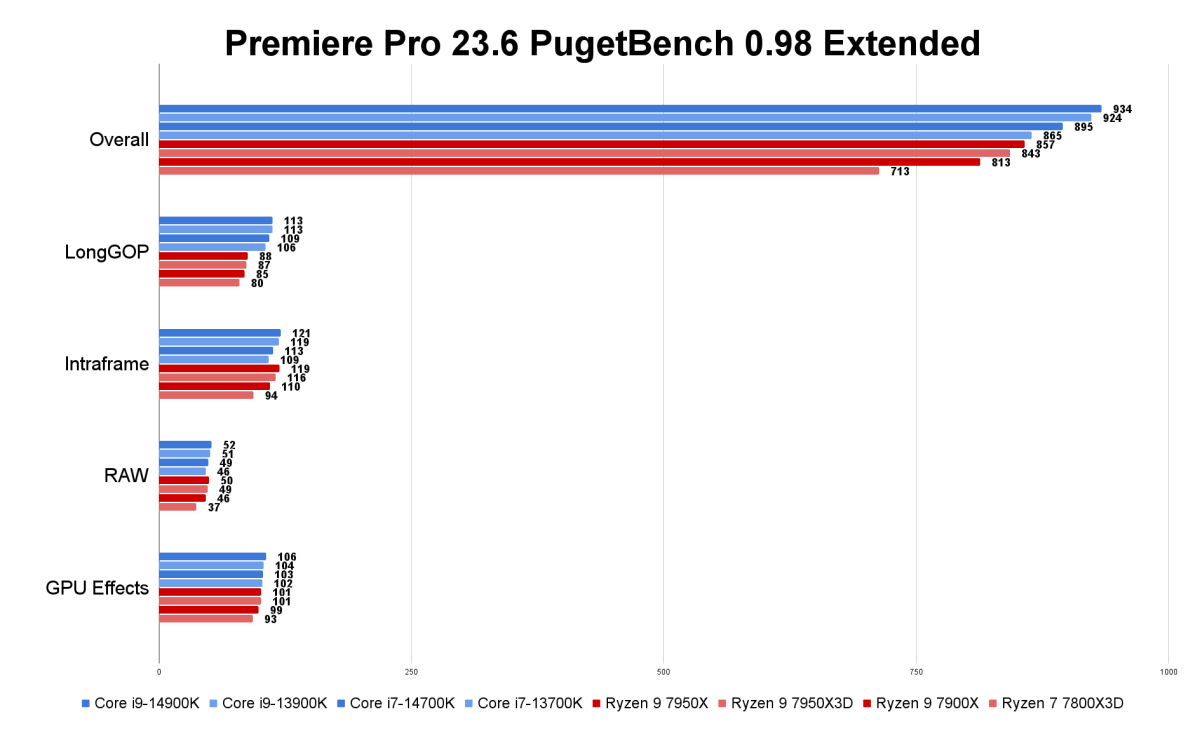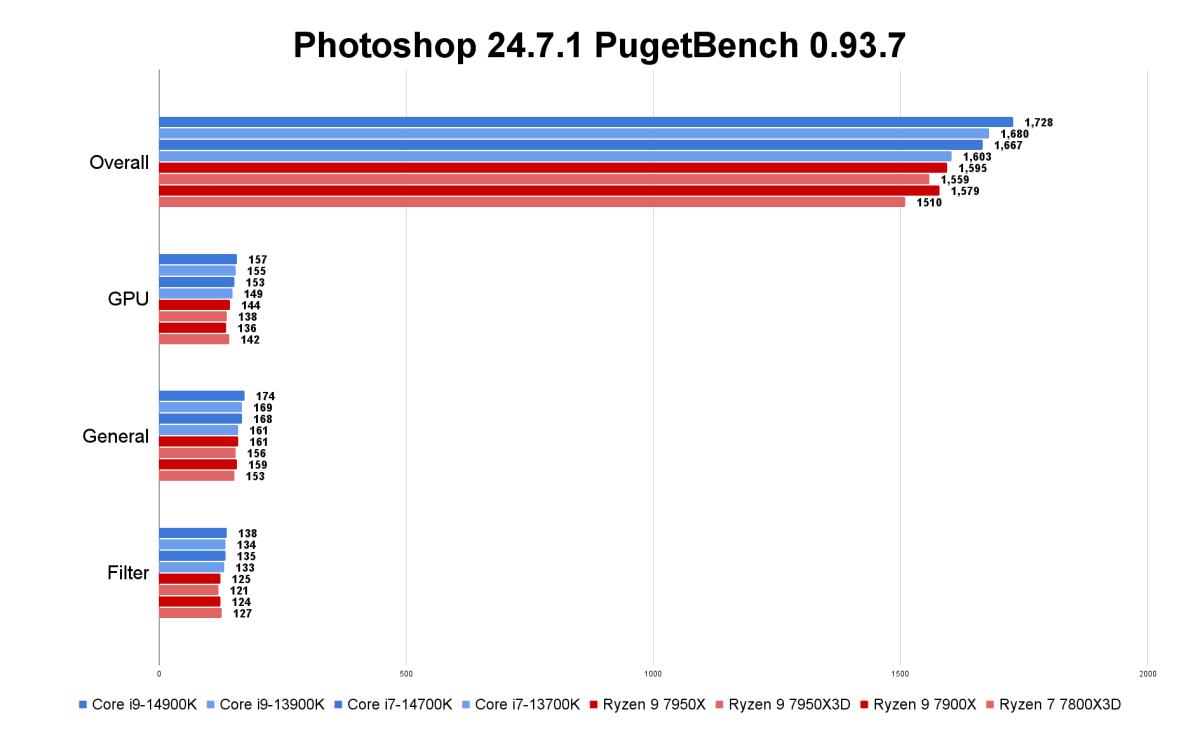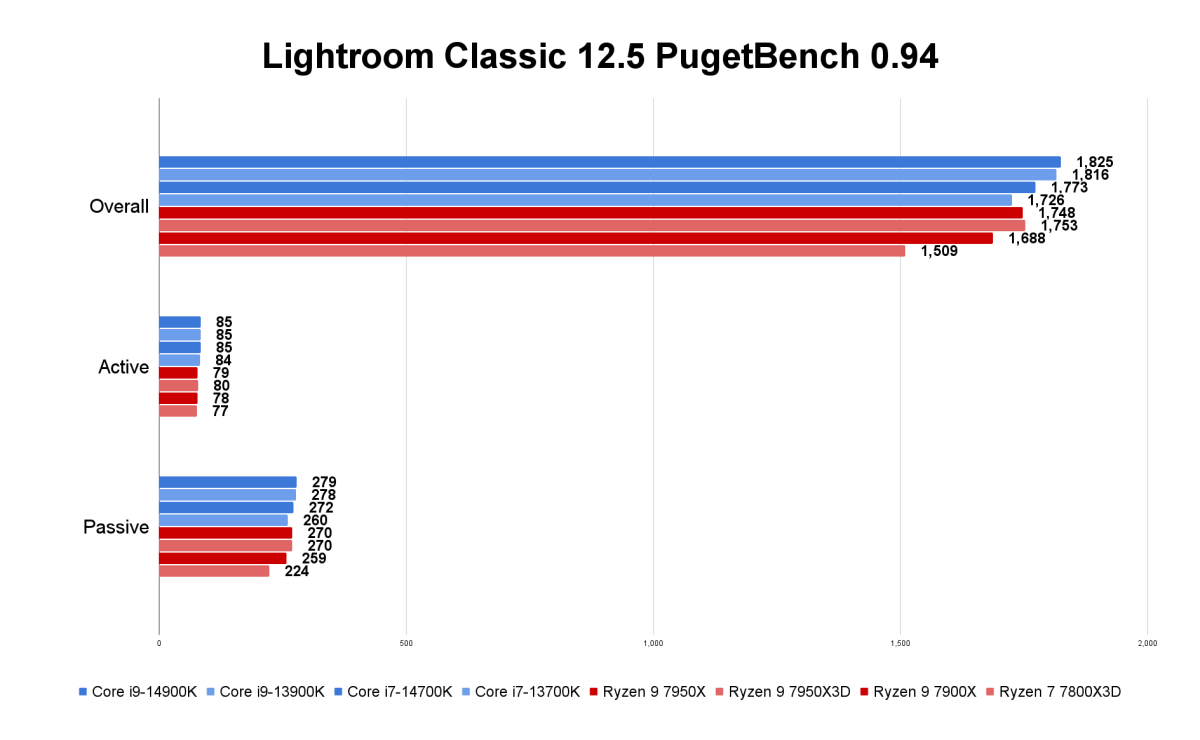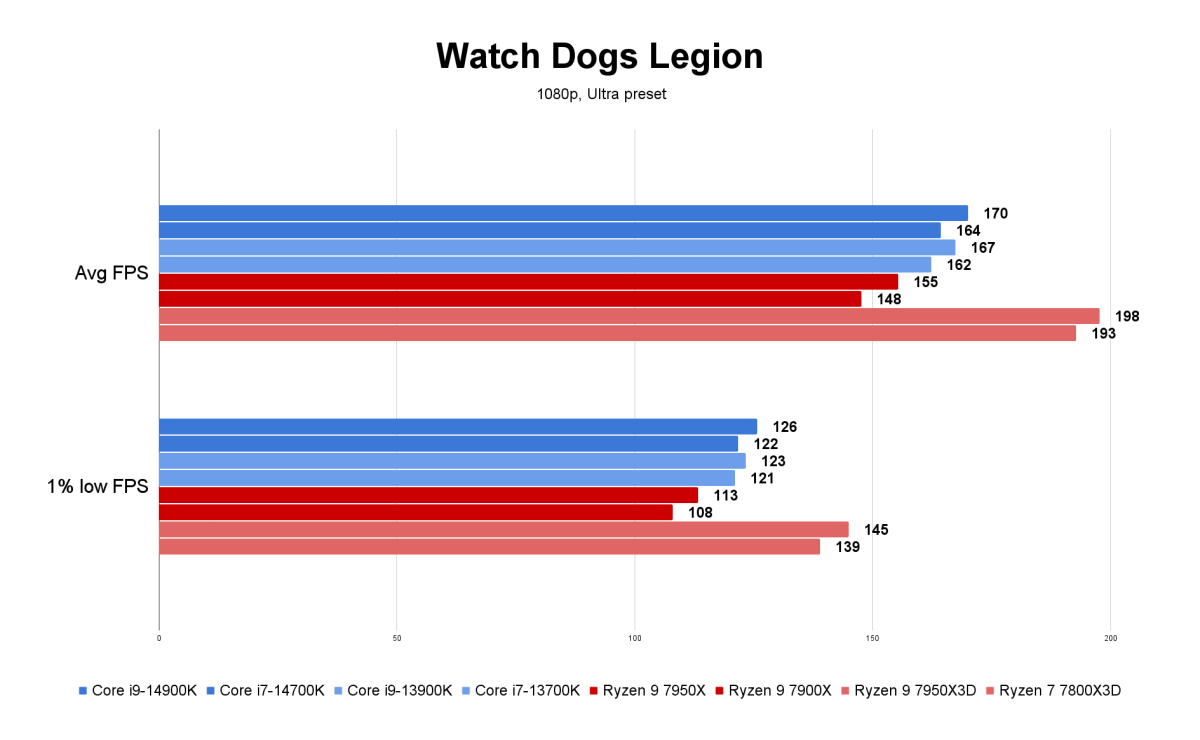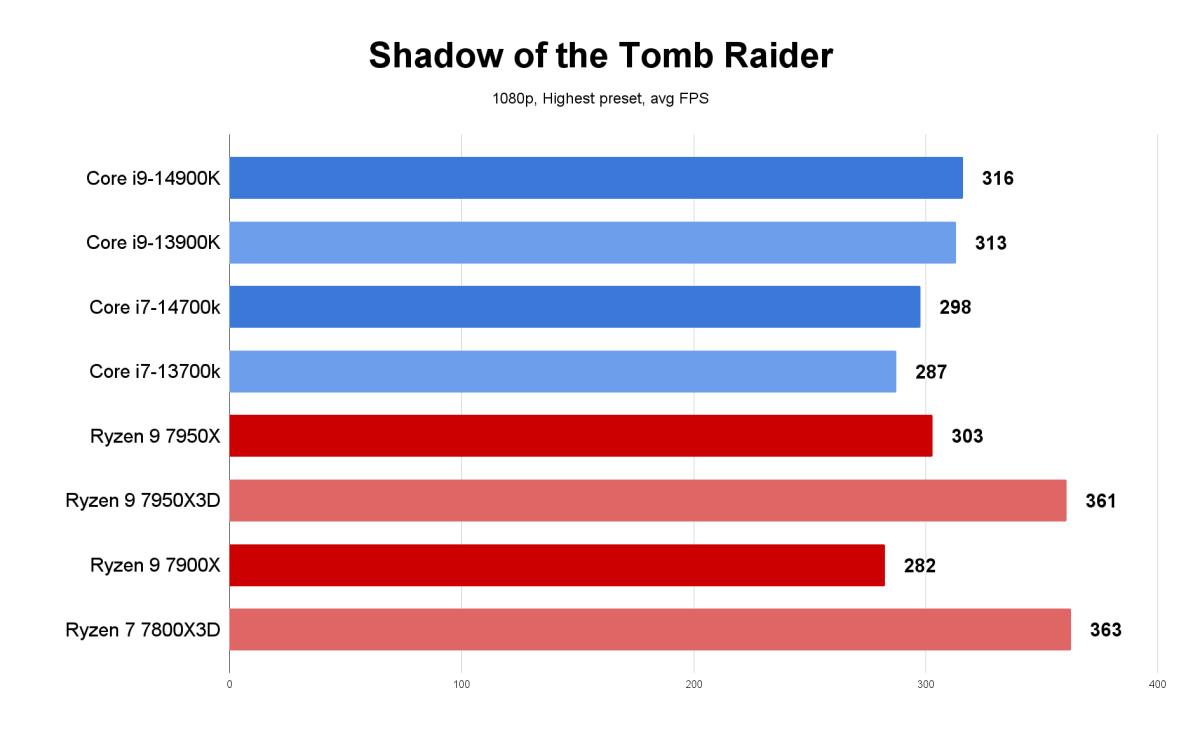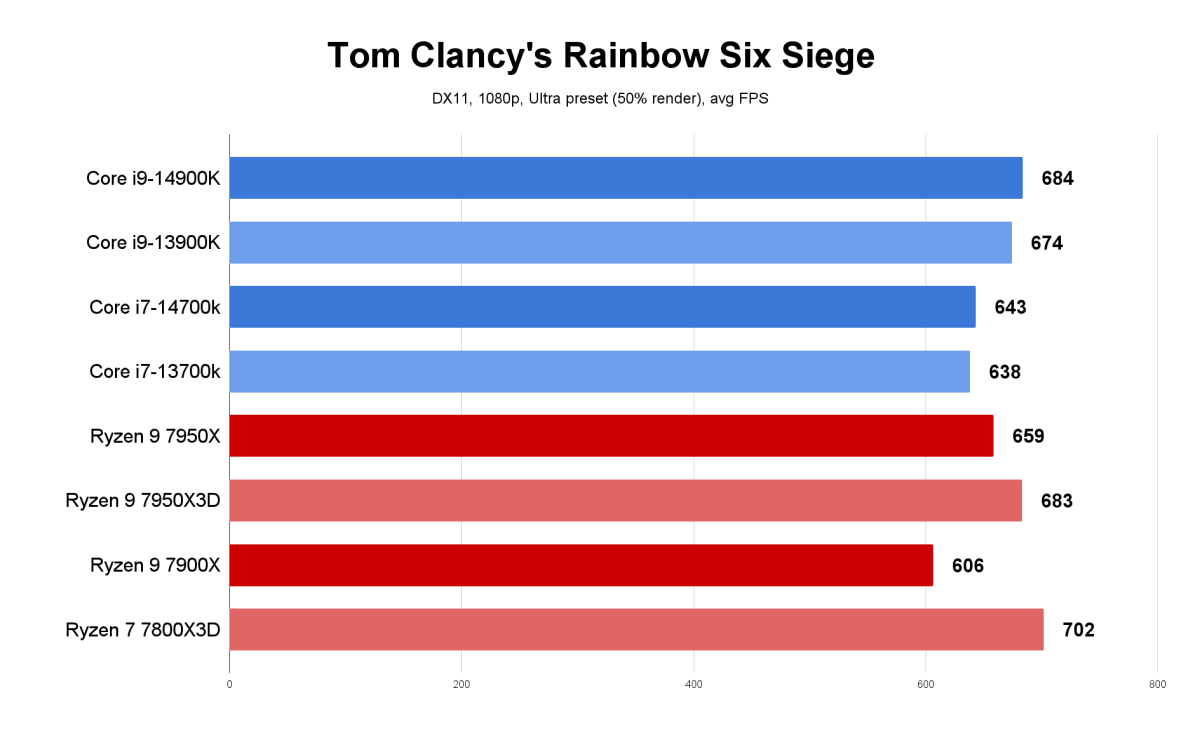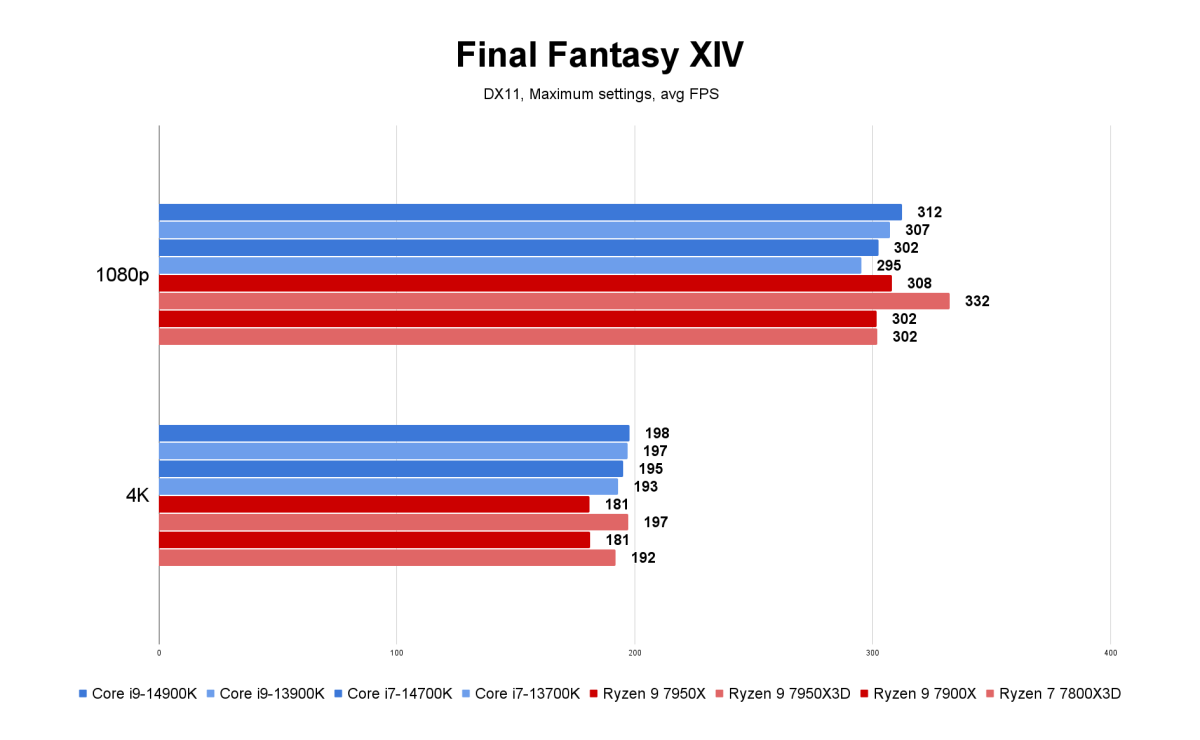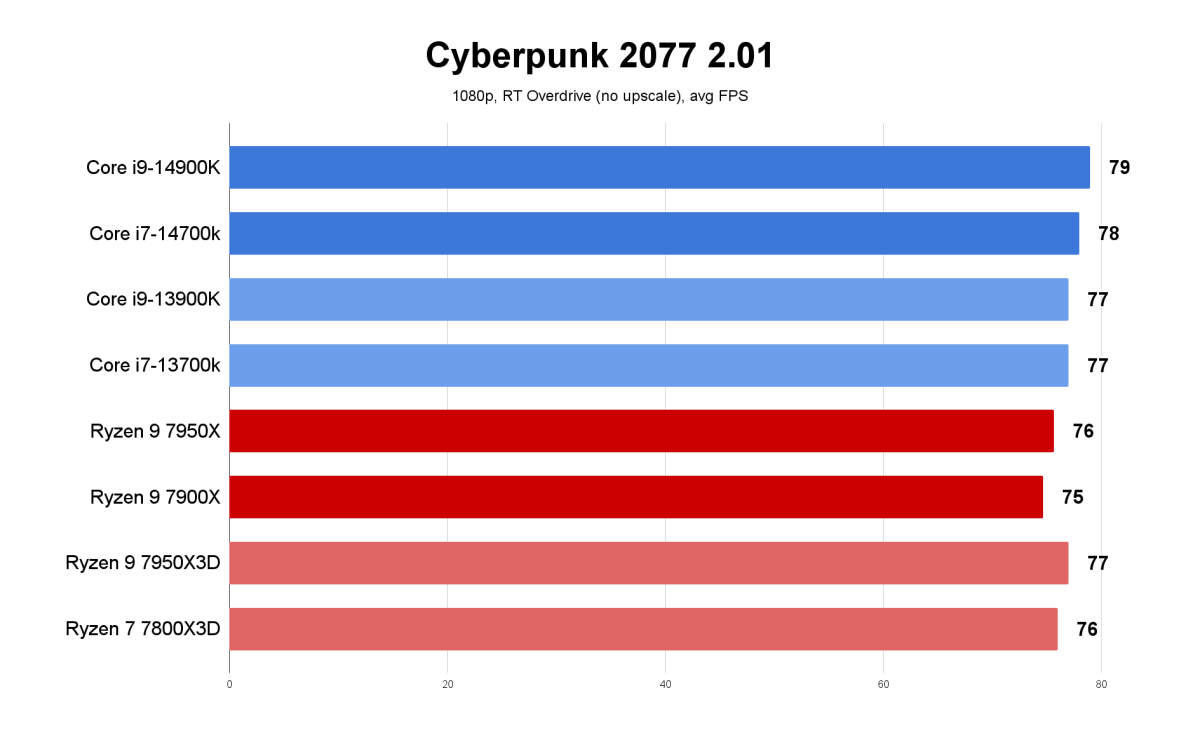Expert's Rating
Pros
- Great gaming and creative performance
- Compatible with existing 600- and 700-series motherboards
- New AI features optimize performance
- Wi-Fi 7, Thunderbolt 5 integrated
- Hits 6GHz in ideal conditions
Cons
- Negligible performance increase over 13900K
- Very high power draw
- Much cheaper Core i7-14700K is only 3 to 6 percent slower in gaming
Our Verdict
Intel’s Core i9-14900K still offers some of the best performance around — albeit at a similarly beastly power draw — but offers negligible performance improvement over its direct predecessor, the 13900K. The addition of Wi-Fi 7, Thunderbolt 5, and new performance-boosting AI features are a nice touch, though.
A new generation of refreshed Raptor Lake processors have arrived. After months of rumors and leaks—and an official announcement just yesterday—Intel’s latest batch of desktop CPUs take their place as the 14th generation in the Core lineup.
You can catch up on the specs and speeds in our comprehensive coverage of the unveiling, but the basics are straightforward. Six new chips have launched, with two variants each of unlocked Core i9, Core i7, and Core i5 parts. (As usual, the main K set comes with integrated graphics, while the KF set lacks them.) The $599 Core i9-14900K leads the pack, followed by the $419 Core i7-14700K and $329 Core i5-14600K. They primarily offer small upticks in clock speed over 13th gen, with the flagship CPU now able to reach a turbo speed of 6.0GHz. The biggest news is the Core i7 models have gained four additional efficiency cores.
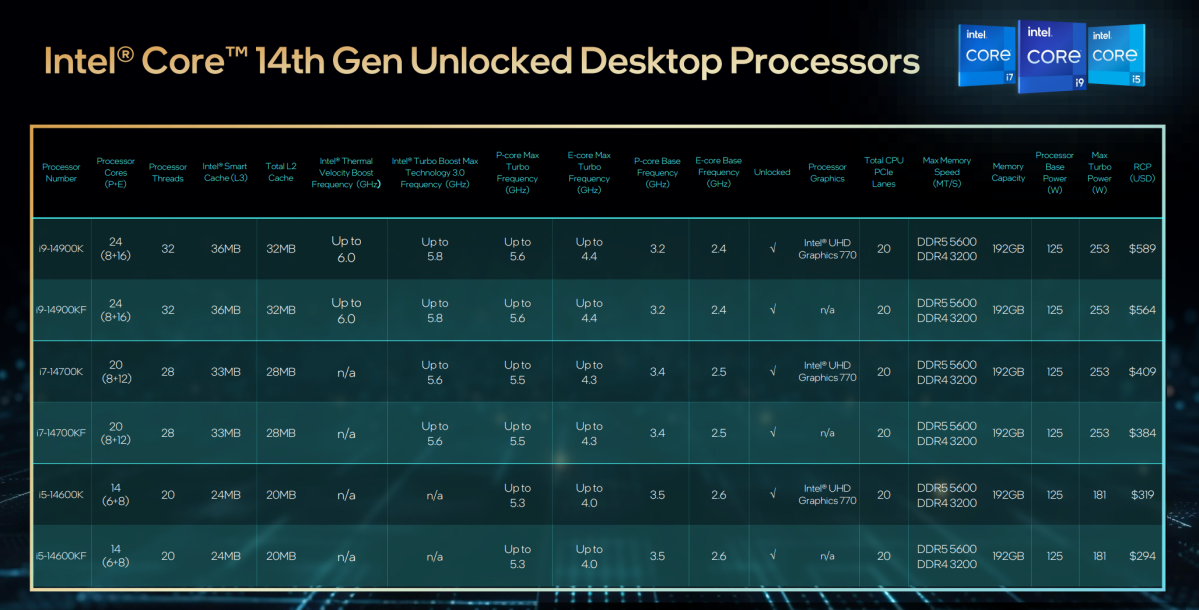
Intel
As you might expect, these processors don’t offer a stunning leap in performance, as we saw when 13th-gen Raptor Lake dethroned 12th-gen Alder Lake. These refreshed CPUs offer mild clock speeds bumps but identical IPC (instructions per clock) as their predecessors. And so if you’ve been thinking to upgrade to these refreshed Raptor Lake parts, there are several things you should know while making your decision. We go deep into the details in
The Core i9-14900K is a cheaper 13900KS
Well, sort of.
When looking at the test results, you’ll see that the $599 Core i9-14900K all but mirrors its direct successor, the Core i9-13900K. In our content creation benchmarks, the difference between the two processors are virtually negligible. The biggest difference is in Photoshop, with a 2.8 percent uplift—small enough that you could almost attribute it to a margin of error.
Longer bars indicate higher performance.
Our gaming benchmarks offer a similar story. The 14900K offers an improvement ranging from just under 1 percent to 2.6 percent. In more tangible terms, that’s just a few frames per second. The exception? Rainbow Six: Siege has a difference of 10 frames per second, but when frame rates are already in the range of 600fps, that’s still a drop in the bucket.
Longer bars indicate higher performance.
If you’re the kind of person who loves performance charts showing brutal beatdowns, this “upgrade” will disappoint you. Yeah, Intel beats AMD’s standard non-3D Ryzen 7950X, but the gen-on-gen improvements are pretty ho-hum compared to last year, when we saw jumps as high as 48 percent. However, if you adore paying less for top-notch specs, you’ll be pretty happy. Remember, the 14900K will hit 6.0GHz when boosting, even if only for brief periods—and it comes in at $589. Meanwhile, the only other chip capable of 6GHz, the Core i9-13900KS, currently has a street price of $730. And that’s up from its January launch price of $699.
The star of the show is the Core i7-14700K
The flagship Core i9-14900K may sit atop the heap, but it’s kind of a boring chip. It’s hard to get excited about a CPU that sits neck-in-neck with its predecessor on most benchmarks.
Instead, the real standout of the lineup is the $419 Core i7-14700K. (A victory for middle siblings everywhere.) With its four additional E cores, it has a leg up when pitted against its predecessor, the Core i7-13700K. At least, it does in content creation tasks. In Blender, we saw improvements as high as 25 percent in the Monster benchmark, and the average across the Monster, Junkshop, and Classroom tests was just shy of 20 percent. In Cinebench R23’s multithreaded benchmark, we saw a jump of 17 percent. V-Ray 5 also showed an uplift of almost 17 percent.
Basically, during times when you use more threads—think encoding and rendering—you’ll see double digit improvements. When the load is lighter, the uplift is far more modest, though still a little bigger gen-over-gen compared to the Core i9 parts. It’s about a 4 percent bump in our Premiere Pro and Photoshop results, and about 2.5 percent in Lightroom. More singularly threaded tasks only have the 14700K’s modest clock speed bump to lean on, since its IPC is identical to the 13700K.
In gaming benchmarks, the 14700K posted numbers within 3 to 6 percent of the beefier 14900K’s results. If you’re a little more skewed toward gaming than content creation, then the $409 Core i7-14700K is going to be a much more cost effective choice. It also out performs the AMD Ryzen 9 7900X, which has a current street price of about $450. If you need to go with a current generation part, this one’s the real standout. It sits in a nice sweet spot.
You can reuse your (relatively) older motherboard
As iterations of 13th-generation Raptor Lake, Intel’s 14th-generation Core processors are compatible with 600-series and 700-series motherboards. No socket changes or even new chipsets are being released with these parts. So if you have a mobo that alread
Autentifică-te pentru a adăuga comentarii
Alte posturi din acest grup

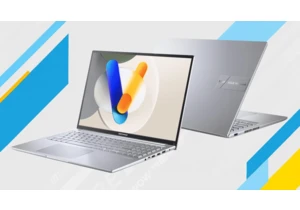
It’s hard to find an affordable laptop to recommend these days, since
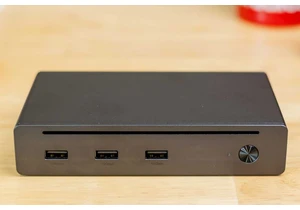
Prime Day deals on docking stations have been leaner this year than u
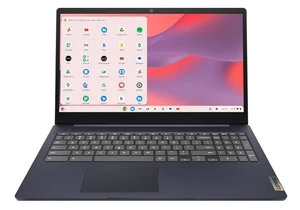
When I hunt down Chromebook deals for Prime Day, I’m looking for the

Prime Day is a prime (har har) time to find some amazing tech deals.
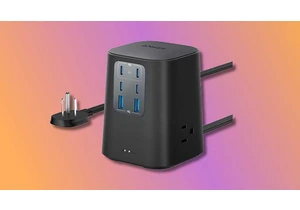
Ditch the multiple chargers and opt for an Anker charging station; it
